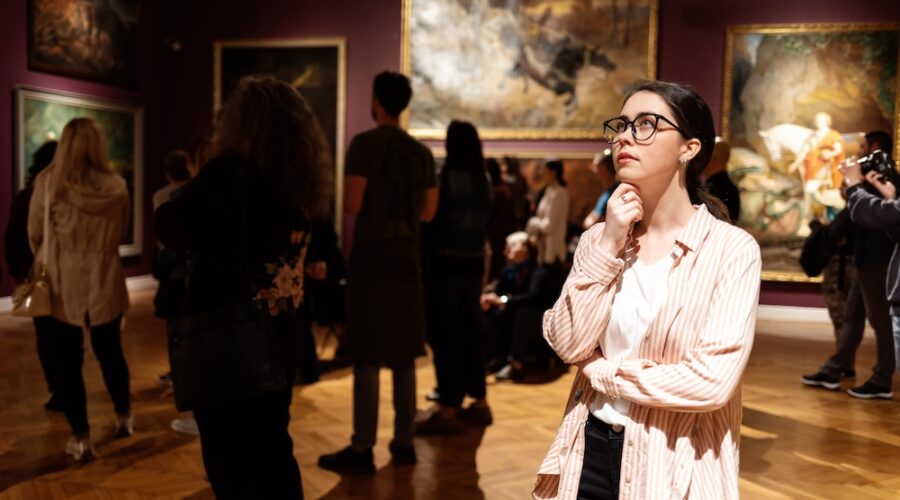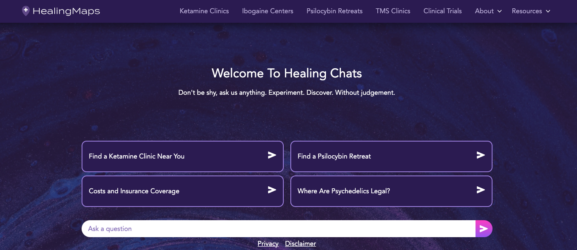Why the “Museum Dose” is the Goldilocks of Psilocybin Consumption
In recent years, the conversation around psilocybin, the psychoactive compound found in certain mushrooms, has shifted significantly. With growing interest in its therapeutic potential and recreational use, understanding the nuances of psilocybin consumption is more important than ever. One such nuance is the concept of a “museum dose.” This dose is becoming increasingly popular because it’s not too small, and not too much. It’s just right for more common situations. But what does it actually mean, and what are its implications for users?
Ready to explore a new horizon in mental health? Try out the beta version of HealingChat, HealingMaps AI chatbot that takes all our vetted content, clinics and retreats to answer all your questions in a safe environment. Try the beta version now!
What is a Museum Dose?
As states like Oregon and Colorado decriminalize legalize psilocybin, the use of magic mushrooms has increased. A museum dose, often found in discussions about psychedelics, particularly psilocybin, refers to a dosage that is higher than a microdose but lower than a dose that would lead to a full psychedelic experience. The term is derived from the idea that such a dose is suitable for public places, like museums, where an individual desires a heightened sensory and cognitive experience without the overwhelming effects of a full dose.
Museum Dose Compared to Other Doses
| Dosage Type | Amount (in grams) | Effects and Experience | Potential Benefits of Museum Dose |
| Microdose | 0.1 – 0.2 | Subtle, often sub-perceptual effects. May improve mood, creativity, focus without noticeable alteration in perception. | Not ideal for enhanced sensory experiences. Regular, subtle effects ideal for daily functioning. |
| Museum Dose | 0.5 – 2 | Enhanced sensory perception and cognitive processes without intense hallucinations or loss of control. Ideal for public, stimulating environments like museums. | Enhanced appreciation for art and nature. Suitable for public settings without overwhelming effects. |
| Moderate Dose | 2 – 3.5 | Noticeable psychedelic effects, including visual distortions, deeper introspection, and enhanced emotional processing. | Too intense for public settings. Suitable for therapeutic or spiritual exploration in controlled environments. |
| High Dose | 3.5 and above | Intense psychedelic experience with strong hallucinations, profound alterations in consciousness, and possible spiritual experiences. | Not recommended for public settings. Requires a safe, controlled environment and supervision. |
RELATED: Interested in psilocybin therapy? Find a psilocybin retreat that’s perfect for you
Dosage and Effects
Typically, a museum dose of psilocybin ranges from 0.5 to 2 grams, depending on the individual’s body weight, tolerance, and the potency of the mushrooms. This dosage is intended to induce subtle perceptual, emotional, and cognitive enhancements. Users often report increased sensory perception, such as more vivid colors and patterns, and a heightened appreciation for art and music, making it ideal for a setting like a museum.
The effects of a museum dose are far less intense than a full psychedelic dose, which usually starts around 3 grams. Users shouldn’t expect hallucinations or a complete alteration of reality. Instead, the experience is often described as a sense of openness, increased empathy, and a mildly altered state of consciousness.
RELATED: Here’s How Long It Takes for Mushrooms to Kick In
Safety and Legal Considerations
It’s crucial to approach psilocybin with caution. While a museum dose is considered safe for most users, individual reactions can vary. Factors such as mental health history, current mood, and environment play a crucial role in shaping the experience.
Importantly, psilocybin is classified as a Schedule I drug in many countries, including the United States, meaning it’s illegal for recreational use. However, some cities and states are beginning to decriminalize or lower the legal penalties associated with its use. Users should always be aware of and comply with their local laws.
Therapeutic Potential
Apart from recreational use, there’s growing interest in the therapeutic potential of psilocybin, including in museum dosages. Research suggests that psilocybin can be effective in treating conditions like depression, anxiety, and PTSD. A museum dose, while not as potent as a therapeutic dose used in clinical settings, may offer mental health benefits such as mood enhancement and stress reduction.
According to Andrew Tansil of Sayulita Wellness Mushroom Retreat, a museum dose makes a good starting point for psilocybin patients. He had this to say:
At Sayulita Wellness Retreat, our approach to psilocybin therapy often begins with a carefully considered 1.5-gram baseline dosage, aligning with the ‘museum dose’ range of 0.5 to 2 grams. This dosage is thoughtfully chosen to balance the need for a perceptible and transformative experience while maintaining a level of comfort and control for our clients. If needed, and depending on individual responses, we may gently increase by an additional 0.5 grams. This tailored approach allows us to navigate the delicate balance between providing a profound therapeutic experience and ensuring the safety and comfort of our clients. The potential benefits of this dosage range are significant, often leading to deep introspection, emotional release, and a reduction in symptoms of anxiety and depression. Clients frequently report experiencing meaningful personal growth and a renewed sense of connection, which are the hallmarks of a successful psychedelic therapy session.
— Andrew Tansil, Sayulita Wellness
Setting and Intent
The set (short for mindset) and setting are critical in any psychedelic experience. For a museum dose, the setting should be safe, comfortable, and ideally, stimulating in a positive way. This is why museums, art galleries, or nature walks are popular choices. The intent should also be clear – whether it’s for introspection, creativity, or simply to enhance a sensory experience.
Is It Right For You?
The concept of a museum dose in the context of psilocybin consumption offers a middle ground between microdosing and full psychedelic experiences. It allows for a subtle enhancement of perception and cognition, suitable for environments where a full dose would be inappropriate or overwhelming. While it opens up new possibilities for recreational and potentially therapeutic use, it’s vital to approach it with an understanding of personal tolerance, legal considerations, and the importance of set and setting. As the conversation around psilocybin continues to evolve, so too will our understanding of its myriad uses and benefits.



